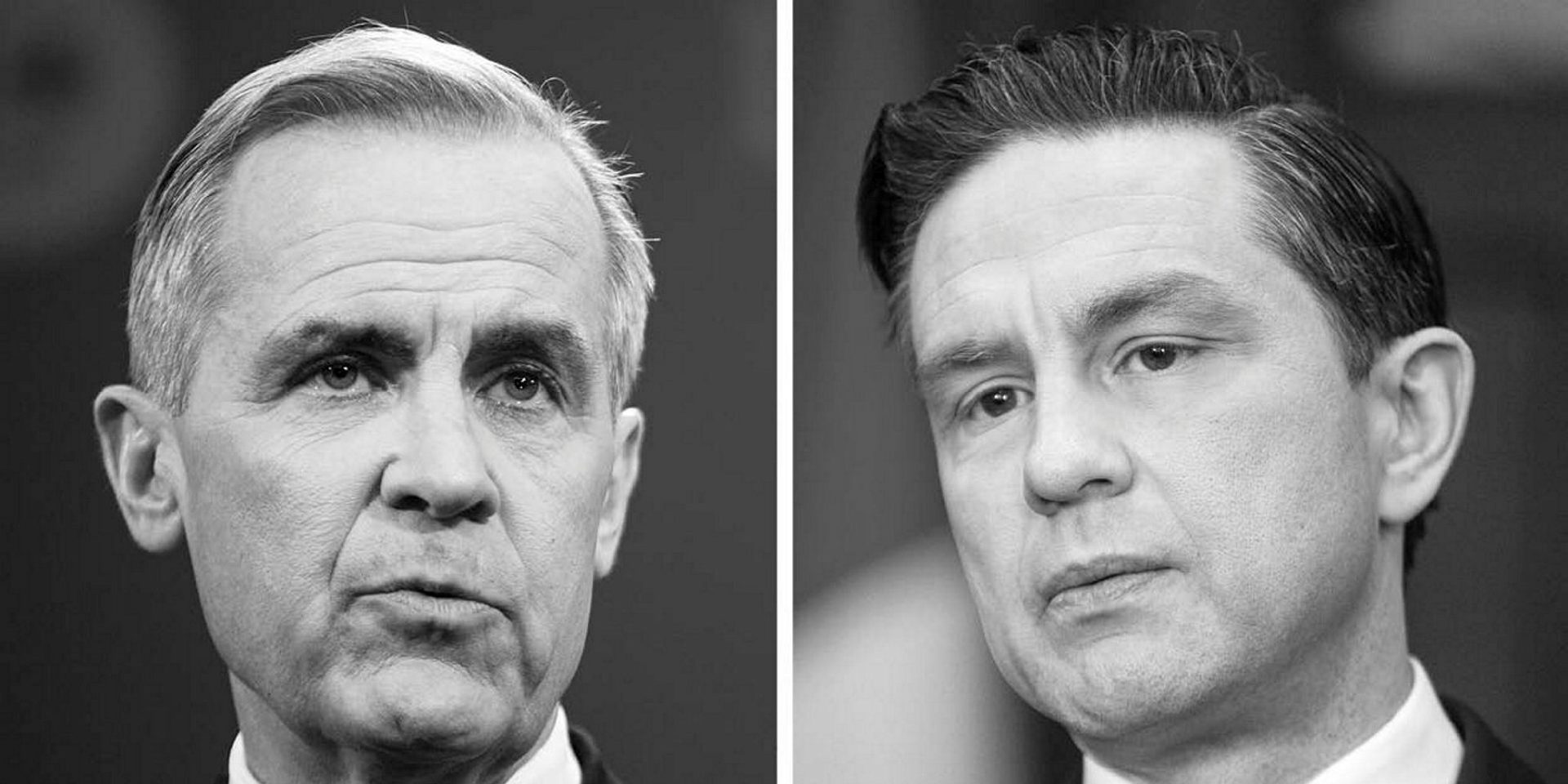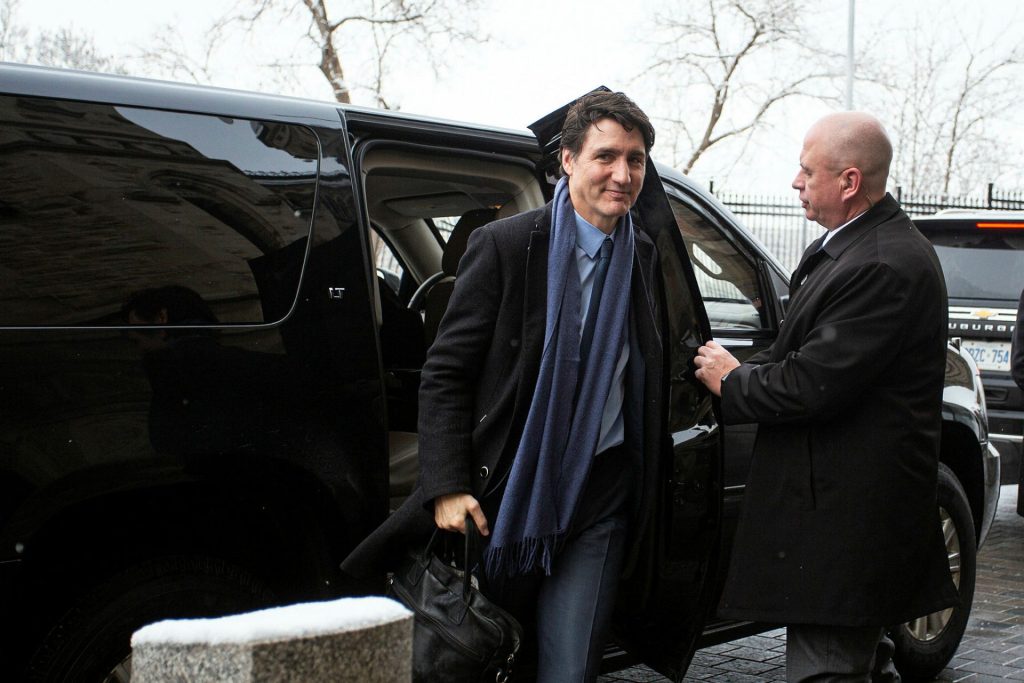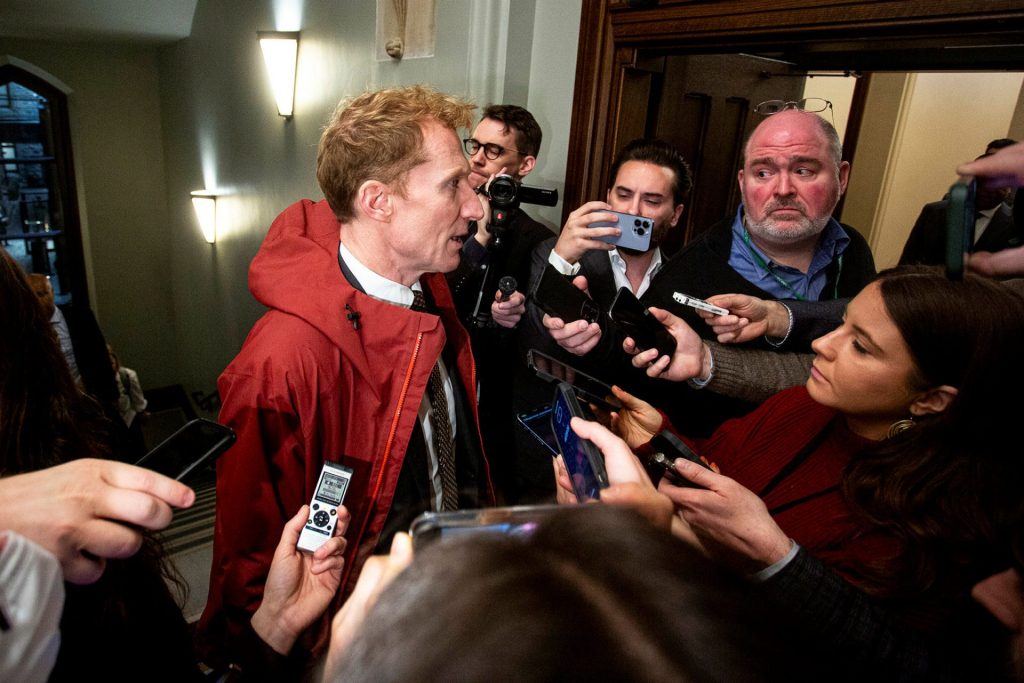Experts urge parties to rethink immigration priorities

As the federal election unfolds, experts are watching closely to see how party leaders plan to tackle Canada’s immigration system.
For decades, Canada has positioned itself as a welcoming place for newcomers. But the Liberal Party has recently faced backlash for embracing record-high immigration levels without adequately planning for the integration of newcomers.
Under then-prime minister Justin Trudeau, the government raised immigrant targets to address labour shortages and demographic changes. Annual targets for permanent residents nearly doubled during Trudeau’s tenure, going from 250,000 newcomers in 2015 to 485,000 in 2024.
The Trudeau government also welcomed more temporary residents, such as foreign workers and international students, leading to a surge in those populations following the COVID-19 pandemic.
Meanwhile, public support for high levels of immigration fell to its lowest level in 25 years. A report released by Environics Institute last year found that roughly 60 per cent Canadians think that the country accepts too many immigrants, up from 25 per cent in 2023.
According to recent data presented by Abacus Data CEO David Coletto as part of the Max Bell School’s 2025 annual Jack Layton Lecture at McGill University on April 3, 53 per cent of respondents said the immigration level is having a negative impact on crime in Canada, 62 per cent said it’s having a negative impact on health care, and 73 per cent said it’s having a negative impact on housing, all of which were increases from the previous year.
A survey conducted by Leger for the Association for Canadian Studies in March found 58 per cent of respondents said Canada accepts too many immigrants. Despite that, most respondents agreed that the country remains a “nation of immigrants.”
Much of the concern has focused on the pressure that rapid population growth places on housing availability and affordability.
The party that wins the federal election on April 28 will be tasked with restoring confidence in a system that many view as broken.

During his campaign, Liberal Prime Minister Mark Carney has called for a sustainable approach to immigration growth. He has voiced support for keeping the government’s reduced immigration targets, which set the permanent resident cap at 395,000 in 2025—down from 500,000 people. Carney also plans to attract skilled workers through the Express Entry program, and by reforming the Temporary Foreign Workers (TFW) Program.
When launching the campaign on March 23, Carney said he would keep his predecessor’s caps in place “until we’ve expanded housing.” He added: “Post-COVID, there was a surge in immigration … and we have not lived up to the bargain with those people. There’s not adequate housing [and] not everyone who came here for an education are getting an education they would expect.”
Meanwhile, Conservative Leader Pierre Poilievre is pushing for reduced overall immigration levels. He said his focus will be attracting highly skilled workers, prioritizing permanent residency pathways for TFWs, and tightening refugee vetting procedures.
Poilievre called for lower levels of immigration at a press conference last August after the Liberals announced changes to the immigration caps. More recently, he called for a lowering of those levels closer to those of the Harper era in an interview with Juno News.
“These out-of-touch Liberals inflated housing costs, drove up the cost of food, pushed two million people to food banks … and ruined our immigration system,” Poilievre said on March 23.
Mikal Skuterud, a professor of labour economics at the University of Waterloo, said that while much of the public debate has focused on immigration levels, the next government should prioritize the way immigrants are selected, and their potential long-term contributions to the economy. He said the Liberals leaned too heavily on temporary visa programs to fill labour shortages during the pandemic without providing clear pathways to permanent status.
According to Skuterud: “The government completely lost track of the system. They were admitting huge amounts of temporary residents on an explicit promise of a pathway to permanent residency … But the number of permanent resident spots was capped.”
Temporary immigration drastically increased during the pandemic as the federal government sought to support under-staffed sectors such as agriculture, health care, and hospitality. In 2019, the year before the pandemic broke out, the government issued 522,110 temporary resident permits for foreign workers and students. But by the end of 2023, that number rose to 1.6 million permits, marking a more than three-fold increase.
Critics say many temporary residents came to Canada with the expectation that their work experience or education would allow them to easily access permanent residency. However, changes in immigration policies and limited availability of permanent resident spots left many individuals stuck with temporary status.
Skuterud suggested this led to a growing number of migrants vying for limited citizenship opportunities.
“While the government was increasing the permanent resident numbers, they weren’t increasing nearly as fast as the temporary permits,” he said. “So there was an imbalance created, which was inevitably going to lead to people being lured here who cannot make that transition to citizenship.”
He noted that the turbulence has been compounded by the fact that six different immigration ministers have served over the past decade. This high turnover has resulted in inconsistent approaches to immigration policy, causing confusion and uncertainty, Skuterud said.
To steady the country’s immigration trajectory, Skuterud said the government should renew its focus on attracting highly skilled workers who can contribute to the economy’s long-term growth—an approach he argued has been key to the past success of the system.
Beyond immigration’s economic objectives, Gauri Sreenivasan, co-executive director of the Canadian Council for Refugees (CCR), said she wants to see party leaders refrain from blaming migrants for issues such as the housing crisis.
“This election, the political parties should think about the role they have in shaping how people understand immigration, our humanitarian commitments, and refugee resettlement. It’s about the policies, but it’s also about how the issue is discussed on people’s doorsteps and in party’s platforms,” she said.
She noted that the Liberals cut their refugee intake by 21 per cent last year—a move critics say was a result of widespread scapegoating of migrants. According to Statistics Canada data from last year, it’s anticipated that there will be a 14.6-per-cent drop in refugee arrivals, from 131,250 to 112,050, between 2025 and 2026.

On April 3, the CCR, along with 200 other organizations, urged party leaders in an open letter to protect the rights of refugees and migrants, as these issues have grown increasingly divisive.
“At a time of significant political and economic insecurity and amidst a cost-of-living crisis that affects us all, refugees and migrants have been frequent targets,” the letter says. “As the federal election approaches, we are writing to seek your commitment to reject this scapegoating and defend and strengthen one of Canada’s best traditions: protecting refugees and welcoming newcomers.”
Since United States President Donald Trump took office in January, his administration has implemented strict policies aimed at reducing immigration and tightening border security, leading advocates to suggest that Canada may need to step up its efforts to welcome more migrants.
As the crackdown on immigration in the U.S. continues, individuals could seek “safer havens” in Canada. For instance, in February, the Canada Border Services Agency recorded 126 asylum seekers crossing from the U.S.—the highest monthly total in the past year.
Given this, Canada must be vigilant in protecting its reputation as a migrant-friendly country, particularly as anti-immigrant sentiment rises in the U.S. and elsewhere, said Sreenivasan, noting, “We’re not immune to that here in Canada.”
To safeguard against these shifts, Sreenivasan urged the next government to consider amending the Canada-United States Safe Third Country Agreement. The agreement, which was implemented in 2004, requires asylum seekers to be directed to the first “safe” country they enter. However, many advocacy groups argue that the U.S. no longer meets the criteria of a “safe” country due to its increasingly harsh immigration policies, such as the detention of asylum seekers and the separation of families.
Domestically, the next federal government will also have to face challenges over migrant rights, including concerns over Canada’s detention system. The United Nations Committee on the Rights of Persons with Disabilities recently criticized the country’s immigration detention practices, noting that migrants with disabilities are disproportionately held in correctional facilities. The UN has called for an end to immigration detention on human rights grounds.
The report suggests Canada should “end the use of immigration detention by increasing community-based, independent alternatives that provide access to holistic supports, such as housing, health care, mental health services, legal representation, disability-related supports, and children’s services.”
Statistics Canada data indicates that between 2016 and 2021, Canada welcomed more than 1.3 million new immigrants, the highest number recorded in a Canadian census. This growth has led to newcomers making up 23 per cent of the population, the largest proportion since Confederation and the highest among G7 countries.
As the political climate seemingly grows more hostile toward migrants, Andrew Griffith, former director general of citizenship and multiculturalism at Immigration Canada, said he sees it as a chance for the country to reaffirm its leadership in migration.
“Canada could have an opportunity to attract highly skilled, internationally recognized experts because the political climate in the U.S. is so bad. The government could have the best and brightest and have a focused recruiting campaign for people that will no longer want to work in the U.S.,” he said.
While the political parties have not yet released their full commitments on immigration, Griffith said he believes the end of the previous Liberal government signalled the start of a new era in immigration policy.

Recent policy announcements indicate that the number of immigrants entering Canada is expected to decline in the coming years, with progressively lower targets set for each year. According to Griffith, former Liberal immigration minister Marc Miller already took clear steps towards reducing immigration levels, marking the end of what he calls “an era of unbridled immigration.”
Moving forward, Griffith said the key issue to watch in the election is which party will present a plan that effectively addresses the challenge of Canada’s “absorptive capacity.” This includes ensuring that immigration levels are aligned with the country’s ability to manage the impact on housing, health care, and other crucial services.
In his view, Canada’s commitment to immigration remains unchanged, but the system and its policies require reform. “It’s about overhauling the immigration system—not just focusing on the immigrants themselves.”
The Hill Times





 LICENSING
LICENSING PODCAST
PODCAST ALERTS
ALERTS













